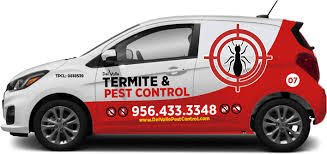
Drywood termites are one of the most destructive pests that can infest your home. Unlike their subterranean cousins, drywood termites do not require soil contact to survive. They live directly within wood, feeding on structural beams, furniture, and flooring. Their ability to remain hidden deep inside dry wood makes them especially dangerous, as they often go unnoticed until significant damage has already occurred. Understanding drywood termites is essential for protecting your home and avoiding expensive repairs.
What Are Drywood Termites?
Drywood termites are insects that live and feed within dry, undecayed wood. They are usually smaller than subterranean termites, but they can be just as destructive. These pests thrive in warm, coastal, and dry climates, making them common in states like California, Florida, Texas, and parts of the Southwest.
Unlike subterranean termites that build colonies underground and enter structures through the soil, drywood termites fly directly into a home, often through attic vents, cracks, or exposed wood. They establish colonies within the wood itself and do not build mud tubes, which are typically associated with subterranean termites.
Signs of a Drywood Termite Infestation
Because drywood termites live inside the wood they consume, detecting an infestation can be difficult. However, there are several telltale signs:
- Frass (termite droppings) – Drywood termites leave behind small, sand-like pellets of wood-colored waste near infested areas.
- Hollow-sounding wood – Wood that sounds hollow or gives easily when pressed may be compromised.
- Blistered or uneven surfaces – Infested wood can appear blistered or distorted.
- Discarded wings – After swarming, drywood termites shed their wings, often found near windows or light fixtures.
- Tight-fitting doors and windows – As termites consume the wood, warping may occur, making doors and windows hard to open.
If you notice any of these signs, contacting a pest control professional for an inspection is crucial.
How Drywood Termites Spread
Drywood termites typically spread through aerial swarming, when winged termites (called alates) leave an existing colony to start a new one. These swarms usually occur during warm, sunny days and often after rainfall. Once they find a suitable wooden area, they shed their wings and begin building a colony inside.
Another way drywood termites spread is through infested furniture or wood materials brought into the home. It’s essential to inspect second-hand wood furniture, picture frames, or wooden antiques carefully.
Treatment Options for Drywood Termites
Treating drywood termites often involves:
- Spot Treatments – Applying termiticide directly into the infested wood to kill active termites.
- Structural Fumigation – For large or widespread infestations, tenting the home and filling it with gas to penetrate all wood.
- Heat Treatment – Exposing the structure to high heat that kills termites throughout the infested areas.
- Microwave and Electro-Gun Technology – Newer, less invasive treatments targeting smaller infestations.
Preventing Drywood Termite Infestations
To prevent drywood termite problems:
- Seal cracks in the foundation, roof, and around windows
- Keep attics and crawl spaces well-ventilated
- Inspect wooden furniture before bringing it indoors
- Schedule regular termite inspections with a licensed professional
Conclusion
Drywood termites are a silent threat to homes and businesses. Their ability to remain hidden makes early detection and professional treatment essential. With proper prevention, routine inspections, and timely control measures, you can protect your property from the damage these pests cause. Don’t wait—take action now to keep drywood termites away for good.

